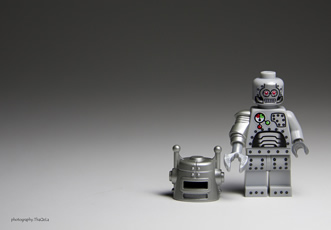Raging against the automated machine

We all remember Tay? The chatbot from Microsoft, which turned out to be xenophobic and racist and certainly was a lesson in inefficient AI. The experiment, held on a dedicated Twitter account, quickly descended into chaos when the chatbot began sprouting Nazi support and offending Twitter users in various awful ways.
Howard Williams, Marketing Director of live chat software specialist Parker Software, looks at the negative consumer reactions to chatbots and whether the negativity against the technology is necessary.
While it remains to be seen whether chatbots are a permanent customer service fixture or a passing fad, an increasing number of brands are already putting them to work. Almost every large corporation is jumping on the bot bandwagon, with Facebook, eBay and Microsoft among the many brands experimenting with the technology.
However, chatbots are not only being plugged as a novel way to communicate with customers, but as the next step in the development of human to computer interaction and – providing you trust the hype – the end of many customer service jobs.
As with any form of automation, the possibility of handing human responsibilities over to a machine is guaranteed to evoke a backlash. Robotics and automation have loomed over the future of labour for decades – beginning with the introduction of robotic arms to automotive production lines in the 1960s.
Today, developments in artificial intelligence and chatbots are supposedly threatening the jobs of a new generation of employees. However, are chatbots really competition for the customer-agent experience? Doubt it.
By its most simple definition, the primary function of a chatbot is to provide the customer with the answer or information they request. However, any call centre or customer service professional will understand that this is just one small part of providing effective customer service. The fundamental problem with chatbots is that they are simply an automation software package – not a revolution in customer service.
Using technology to improve customer service in the digital era is a continuous challenge, but relying solely on chatbot technology is not the answer. It’s undoubtedly true that the future of customer communication will focus heavily on online chat. However, corporations should be using digital tools to increase interpersonal communication, not replace it.
Instead of automating chat itself, it is more effective to automate the processes that power communication between customers and representatives. In using live chat software for customer service, site visitors get the support they need in real time from a friendly, knowledgeable source.
Put simply, relying solely on chatbots to manage customer interactions removes the key aspect of effective service: the human touch. Digital services like chat software are powerful tools for customer service, but human-to-human communication must remain at the heart of all customer-facing activity.
Since its disaster with Tay, Microsoft has invested in Zo, a new chatbot that will automatically engage in conversation (and hopefully not offend the humans it is interacting with).
Chatbots are still in development. While marketers may be eager to embrace the technology, there is no denying that there are risks involved in being an early adopter. Customer service can be automated, but it should not be automatic.
Similar articles
More from Parker Software
- Raging against the automated machine 20th February 2017
- Can we automate it? Yes we can! 1st November 2016












Write a comment
No comments